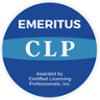In Perricone v. Medicis, 432 F.3d 1368 (Fed. Cir. 2005), the court reversed the Board, and found that a claim to treating sunburn with certain vitamin esters was patentable in view of art disclosing the same compounds to benefit normal skin. The Board had found the claim invalid as inherently anticipated by the prior art use, but the court found no disclosure in the prior art of applying the compounds to sunburned skin.
In Ex parte Matsubara, Appeal 2009-006581 (Feb. 10, 2010), the Board affirmed the Examiner’s rejection of a claim to a method for improving bone metabolism by (a) selecting a human or animal having a tendency toward a decrease in bone density (e.g., afflicted with osteoporosis), and (b) therapeutically administering to said human or animal certain types of fermented soy milk or “FSM.” The Examiner rejected the claim as inherently anticipated by a publication that disclosed studying the lipid metabolism in aged, ovariectomized rats after giving them FSM, in view of a publication that established that such rats were an art-recognized model of osteoporosis. Applicants argued that the prior art showed no effect of FSM on osteoporosis and no “selection step” of choosing the rats to evaluate, since the prior art was not concerned with studying osteoporosis.
After quoting sections of Perricone discussing inherency, that the Fed. Cir. panel found inapplicable to the decision that it reached, the Board affirmed the rejection, stating that “the claimed method ‘is inherent and in the public domain if it is the “natural result flowing from” the explicit disclosure of the prior art’…regardless of whether the inherent result is recognized.” Although I have argued that the use of an old compound for a “different purpose” than disclosed in the art should be sufficient to distinguish the prior art use if a “new use for an old compound” is being claimed, Perricone may deserve a closer reading.
It may well be that the Fed. Cir. reversed in Perricone because no manipulative step of applying the esters to sunburned skin was disclosed in the prior art, not simply because the claimed purpose was not in the prior art. The panel did begin by agreeing: “If [the prior art] discloses the very same methods, then the particular benefits must naturally flow from those methods even if not recognized as benefits at the time of [the art’s] disclosure. Thus [the art] anticipates if its disclosure of ‘topical application’ satisfies the application step in Dr. Perricone’s various asserted claims.” The panel went on to find that the art did not disclose the application step of applying the esters to sunburned skin.
So, given that new uses of old compounds remain statutory subject matter and can be extremely valuable, how do we claim them? I think it is important that the prior art rats given FSM and the rats treated by Matsubara were both models for osteoporosis. At least some Examiners give weight to the value of “selection” or recognition that a specific subpopulation can be helped by administration of an “old drug.” For example, consider a claim to “a method of treating a human male afflicted with prostate cancer comprising administering an effective anti-cancer amount of Lipitor to said human male.” Hopefully, the prior art does contain a publication on the treatment of prostate cancer with a chemotherapeutic agent, e.g., docetaxel, that also incidentally discloses that some of the patients were given Lipitor to lower cholesterol. Then you are left hoping that the inventor’s dosing regimen is different than the standard dosing regiment used to lower cholesterol. The noose tightens.






